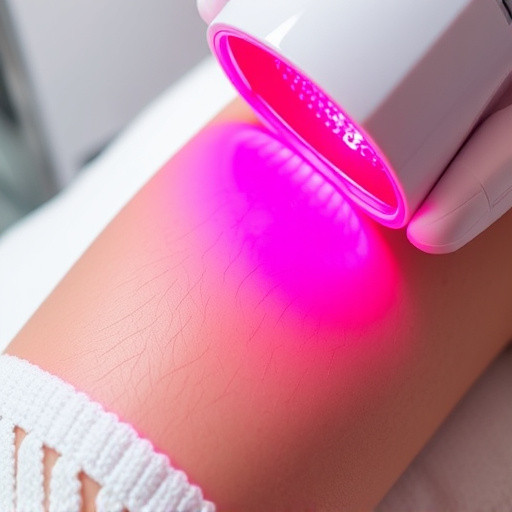Melasma, a hormonal skin condition causing dark facial patches, is treatable with various options including topical creams, chemical peels, laser therapy, and non-surgical procedures like facials or microneedling. Diagnosis involves visual assessment and specialized lighting by dermatologists. Results vary based on severity, chosen method, and skin response, often taking several weeks to months for visible improvements. Regular check-ins with a dermatologist are crucial for progress tracking and treatment adjustments.
Melasma, often called the ‘mask of pregnancy,’ is a skin condition characterized by dark patches on the face. Understanding its causes and diagnosis is the first step towards effective treatment. This article delves into various melasma treatment options, from topical creams to advanced laser therapy, providing insights into how long it takes to see visible improvement. Learn about tracking progress and navigating the timeline of melasma treatment for better skincare outcomes.
- Understanding Melasma: Causes and Diagnosis
- Treatment Options: Topical Creams to Laser Therapy
- Tracking Progress: How Long for Visible Improvement?
Understanding Melasma: Causes and Diagnosis

Melasma is a common skin condition characterized by dark patches that typically appear on the face, often as a result of hormonal fluctuations. It’s important to understand that while it can be a frustrating and unsightly issue, melasma treatment options are available to help restore a more even skin tone. The first step in addressing melasma is accurate diagnosis, which involves a thorough examination by a dermatologist or qualified skin care specialist. They will consider factors like family history, recent hormonal changes, and skin type to determine the underlying cause of the discoloration.
Diagnosis may include a visual assessment, skin scraping for analysis, or specialized lighting techniques to reveal hidden pigmentary abnormalities. Once melasma is diagnosed, individuals can explore various melasma treatment options, ranging from topical creams and chemical peels to more advanced aesthetic treatments like laser therapy. The right approach depends on the severity of the condition and individual preferences, with many non-surgical treatments offering promising results for achieving clearer, more even skin.
Treatment Options: Topical Creams to Laser Therapy

The journey to achieving clear, even skin tones in the battle against melasma involves a range of treatment options tailored to individual needs. One of the most common and accessible approaches is topical creams. These over-the-counter or prescription medications contain active ingredients that target hyperpigmentation. Hydroquinone, for instance, is a popular ingredient known for its ability to inhibit melanin production, gradually lightening dark spots. Retinoids, another class of topicals, promote skin cell turnover and collagen synthesis, contributing to improved skin texture and tone over time.
For more severe cases or those seeking faster results, professional aesthetic treatments offer advanced solutions. Chemical peels, a popular choice, involve applying a chemical solution to the skin to lift away the upper layers, revealing newer, smoother skin. The depth of peeling can vary, with some treatments focusing on superficial layers for gentle exfoliation and others targeting deeper layers for more extensive improvements. Laser therapy is another innovative melasma treatment that uses concentrated light energy to break up pigmented spots. This non-invasive procedure stimulates collagen production and evenly distributes skin tone, often delivering faster results than topical treatments alone.
Tracking Progress: How Long for Visible Improvement?

Tracking progress is an essential aspect of melasma treatment. It’s crucial to understand that visible improvements may take time, usually ranging from several weeks to a few months. The duration depends on various factors, including the severity of your melasma, the chosen melasma treatment method, and your skin’s individual response. Non-surgical treatments like customized facials or microneedling therapy often show initial signs of progress within the first few sessions, but for noticeable and sustained results, a consistent treatment plan over several weeks or months is typically required. Regular check-ins with your dermatologist can help monitor these changes and adjust the treatment strategy accordingly.
Melasma treatment results can vary, but with consistent care, visible improvements may take 4-6 weeks. Different methods, from topical creams to laser therapy, offer diverse timelines and effects. It’s crucial to understand that patient skin types and the severity of melasma play significant roles in determining the time for visible results. Consulting a dermatologist is essential to choose the most effective treatment plan and track progress effectively.














